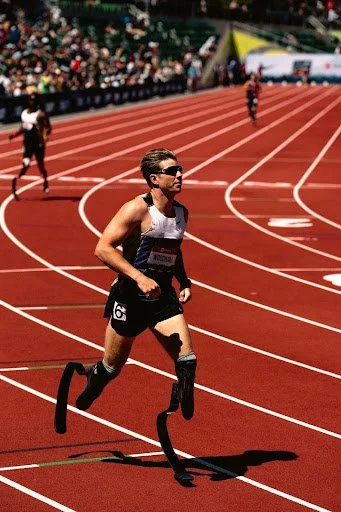By Julia Keith
Every Thursday night, my family and I walked into the youth center ready to play. Of all the Special Olympics unified sports we were part of, basketball was always my favorite. What made it so special was that it wasn’t just about the game, it was about our whole community. Friends, parents, siblings, teachers, and neighbors all came together once a week during the season to play, cheer, and connect. The gym became a place where everyone belonged.
I grew up surrounded by adaptive and inclusive sports, and from an early age I saw what a powerful impact they could have on a community. On the court, friendships blossomed and carried over into school hallways. I watched students and adults who had never spent time with people with intellectual and developmental disabilities (IDD) discover new ways of communicating and connecting. I saw teammates, volunteers, and coaches alike stretch beyond their comfort zones. Sports became more than exercise; they became a way to build trust, dignity, and joy across differences.
As I reflect on those experiences, I realize how much they shaped my own view of inclusion. But I also wondered whether what I had witnessed in my small town was reflected in the larger picture. Research confirms what so many of us have experienced firsthand: unified sports create change that reaches far beyond the court or field.
For some background, Unified Sports is a program pioneered by Special Olympics that brings together athletes with and without intellectual disabilities on the same team. Their goal is to promote social inclusion through shared experiences in training and competition. Today, Unified Sports programs are available across the United States and around the world, offered through organizations like Special Olympics Unified Champion Schools, community leagues, and recreational programs.
Programs like Special Olympics Unified Champion Schools have shown that inclusive teams do more than give athletes a place to play, they can shift entire school cultures. In Special Olympics surveys, the majority of students reported that Unified Champion Schools brought people together, created a more respectful environment, and raised awareness about inclusion. Teachers report students becoming more confident and compassionate, and families describe the pride and self-esteem that come from being part of a team. Teammates without IDD have shared that their perspectives have changed dramatically and that they have a better understanding of one another, with many saying the friendships they built through unified sports became some of the most meaningful relationships in their lives. These relationships challenge stigma and create what researchers call “bridges to social inclusion,” connections that ripple outward into the broader community.
Unified sports has built momentum at a global scale. Today, more than a million people of all abilities participate worldwide, and the numbers continue to grow. Each practice, each game, and each celebration work towards the mission of inclusivity and compassion that unified sports was created for. In doing so, these programs transform not only the lives of the athletes but also the communities that take the time to implement them into their lives.
When I think back to those Thursday nights, I don’t just remember the games. I remember the laughter, the teamwork, and the moments when someone made their first basket and the entire gym erupted in cheers. Those experiences taught me that inclusion isn’t just an idea, it’s something we put into practice, week after week, game after game.
The lessons I learned on that court have stayed with me, shaping how I approach challenges, relationships, and opportunities. My hope is that more communities will embrace programs like these, so that every person has the chance to experience the same pride, connection, and celebration that I was so fortunate to grow up with.
Sources
Why Research Unified Sports (PDF): Unified Sports provides people with and without ID the opportunity to play on the same sports team, creating a space for friendships, physical activity, and fun. Research on Unified Sports has found that Unified Sports athletes experience improved social competence and social inclusion while decreasing problem behaviors. https://media.specialolympics.org/resources/research/unified-sports/SO-Research-Overview-Unified-Sports-06-2018.pdf?_gl=1*4767hy*_gcl_au*OTI2OTY2NzUxLjE3NTc1MTI0MTE.*_ga*NzgzNjIyNDEuMTc1NzUxMjQxMQ..*_ga_KTMLJ70DKD*czE3NTkyNzM5OTkkbzMkZzEkdDE3NTkyNzQwMjEkajM4JGwwJGgw
Does intense contact with people with disabilities lead to more inclusive behaviour within professional practice? Emmers, Elke & Baeyens, Dieter & Petry, Katja. (2022). Does intense contact with people with disabilities lead to more inclusive behaviour within professional practice?. Educational Studies. 49. 1-15. 10.1080/03055698.2022.2150512.












